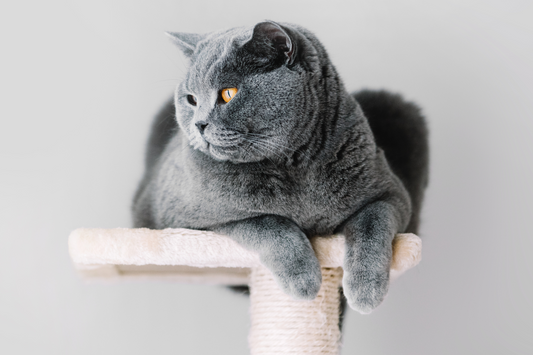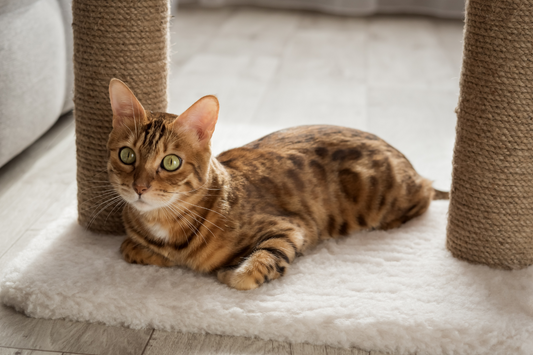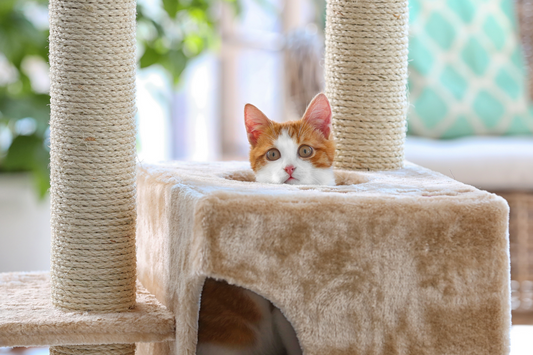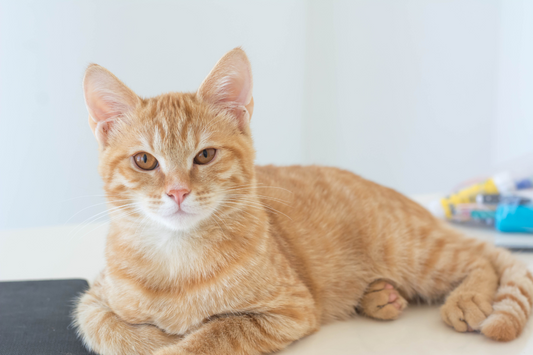
Have you noticed your cat scratching the couch instead of their usual scratcher? Or maybe the scratcher looks more like a pile of worn threads and cardboard? If so, it may be time for an upgrade.
Cats rely on scratchers not only to sharpen claws but also to stretch, mark territory, and release energy. Recognizing the signs it’s time to replace your cat scratcher ensures your feline friend always has a safe and satisfying outlet for these natural behaviors.
In this blog, we’ll walk you through the tell-tale signs to watch for, how to choose the best replacement, and tips to prolong the life of your scratcher. Let’s get started!
Signs It’s Time to Replace Your Cat Scratcher
Hygiene and Pet Health
Over time, scratchers collect fur, dirt, and bacteria. If cleaning no longer restores its look or smell, it could pose health risks to your cat. Signs to watch:
- Persistent odor
- Visible dirt and stains
- Mold or mildew buildup (especially in humid homes)
Preserving the Scratcher’s Condition
A worn-out scratcher is no longer enjoyable for your cat. Signs of excessive wear include:
- Torn or missing materials
- Loose threads or splinters
- Flattened surfaces that don’t offer resistance
Prolonging Product Lifespan
Replacing your scratcher before it’s completely unusable helps maintain your cat’s scratching habits. Waiting too long might cause your cat to seek alternatives—like your furniture!
How to Choose the Best Cat Scratcher for Your Cat
Step-by-Step Guide for Different Materials
Cardboard Scratchers: Lightweight and affordable. Look for dense corrugated cardboard that holds up to vigorous scratching.
Carpeted Scratchers: Soft on paws. Opt for tightly woven carpet that resists unraveling.
Sisal Rope/Sisal Fabric Scratchers: Durable and long-lasting. Sisal fabric is often preferred over rope for smoother scratching.
Recommended Cleaning Products and What to Avoid
Use a pet-safe enzyme cleaner or a simple vinegar-water solution to freshen scratchers. Avoid harsh chemicals or bleach, as they can irritate your cat’s paws or respiratory system.
Why It Is Important to Replace Your Cat Scratcher
Visual Signs of Wear
When the scratcher is reduced to shreds or missing chunks, it’s no longer functional and should be replaced.
Safety Concerns for Your Cat
Worn or unstable scratchers can:
- Expose sharp edges
- Tip over easily
- Cause paw injuries or splinters
Your cat’s safety and comfort should always come first.
Tips to Prolong the Life of Your Cat Scratcher
Placement Tips
Place the scratcher in a high-traffic area where your cat naturally scratches. This prevents overuse in one spot.
Rotating Scratchers
Rotate between 2–3 scratchers in different locations to distribute wear evenly and keep your cat interested.
Encouraging Correct Use
Reward your cat with treats or praise when they use the scratcher. Use catnip or pheromone sprays to attract them to new scratchers.
Conclusion
Recognizing the signs it’s time to replace your cat scratcher helps you provide a safe, engaging environment for your feline companion. Keep an eye out for excessive wear, hygiene issues, and safety hazards—and don’t hesitate to swap in a new scratcher when needed.
With proper maintenance and thoughtful placement, your cat’s scratchers can stay in great shape for months to come. Here’s to happy, healthy scratching! 🐾











